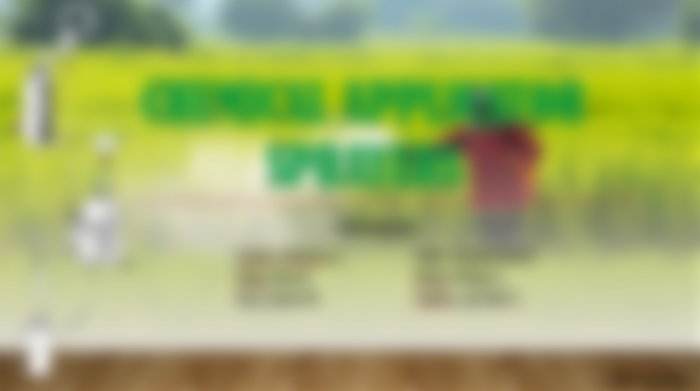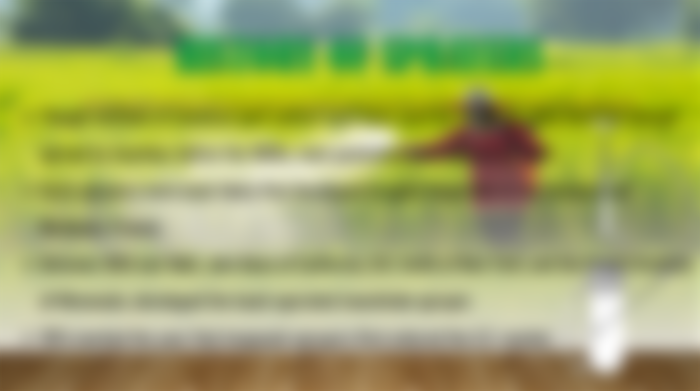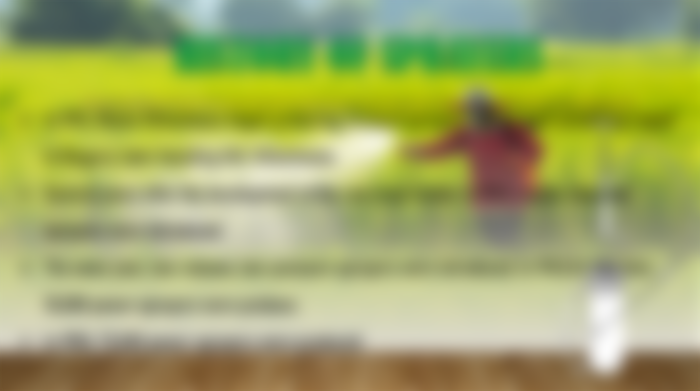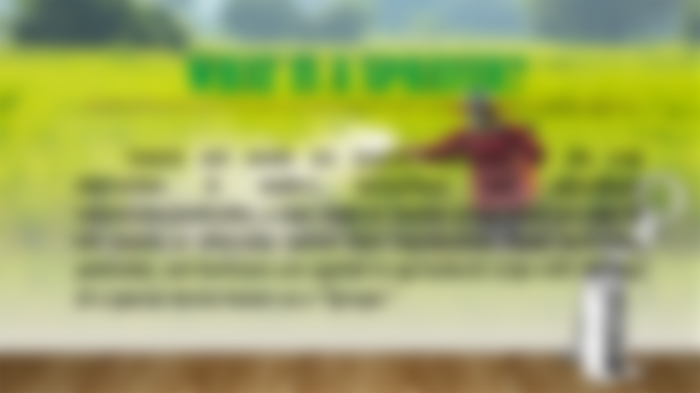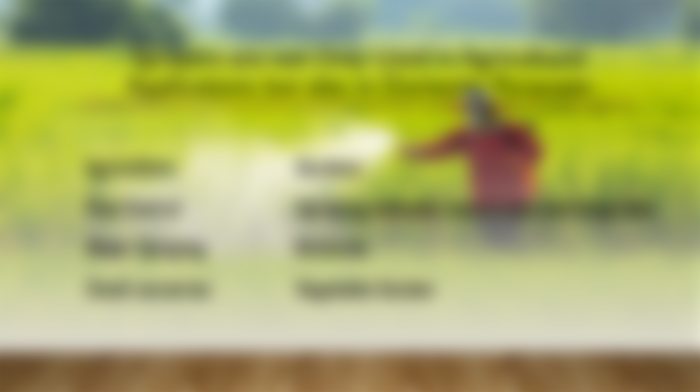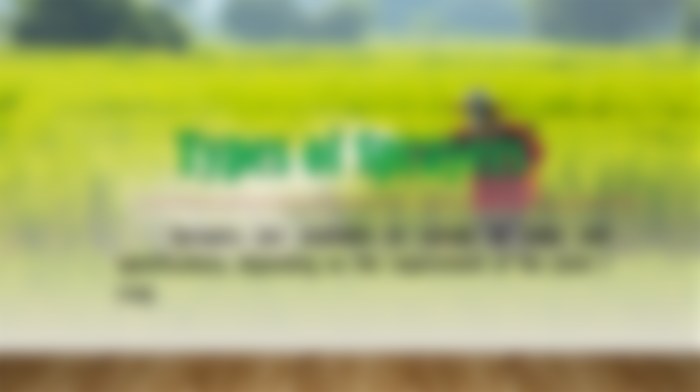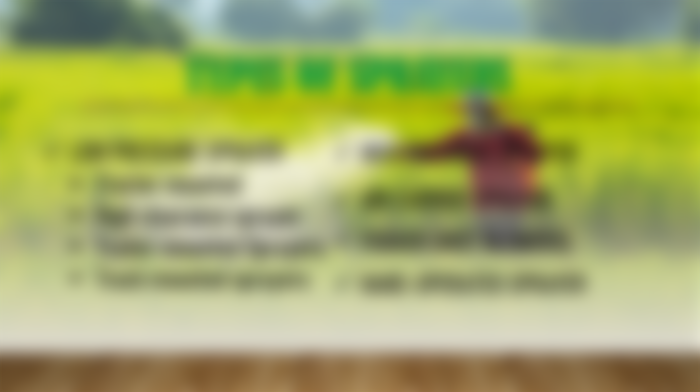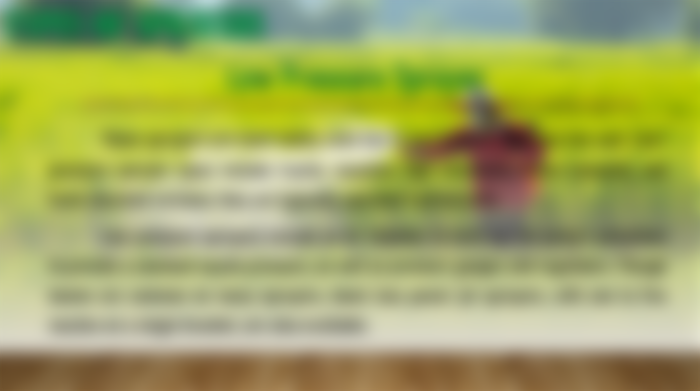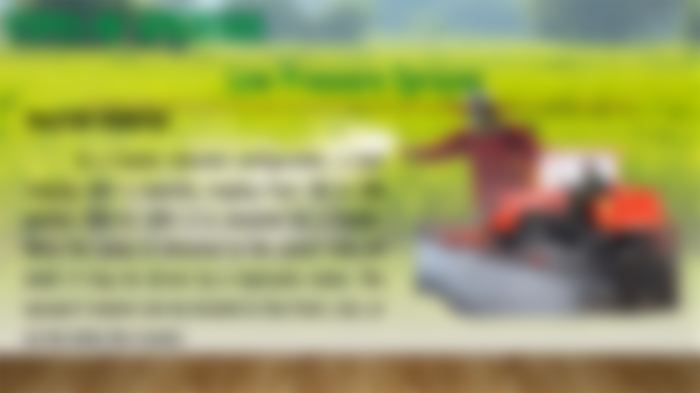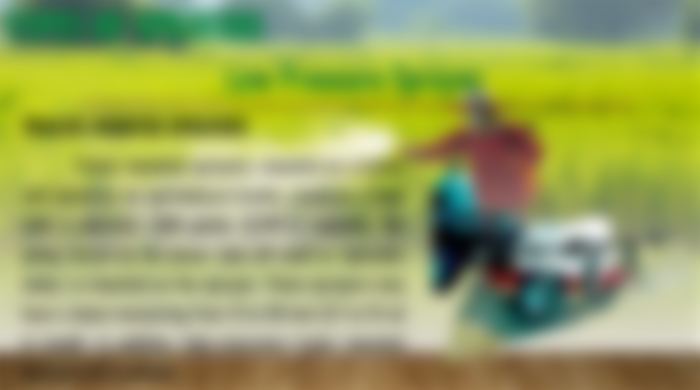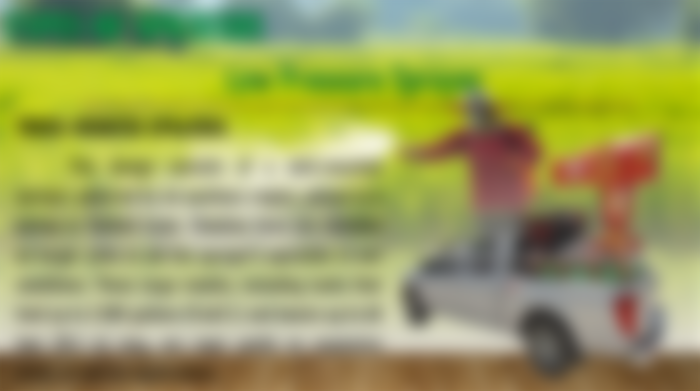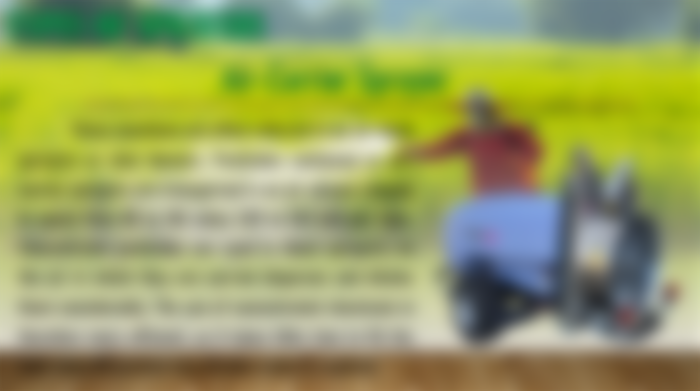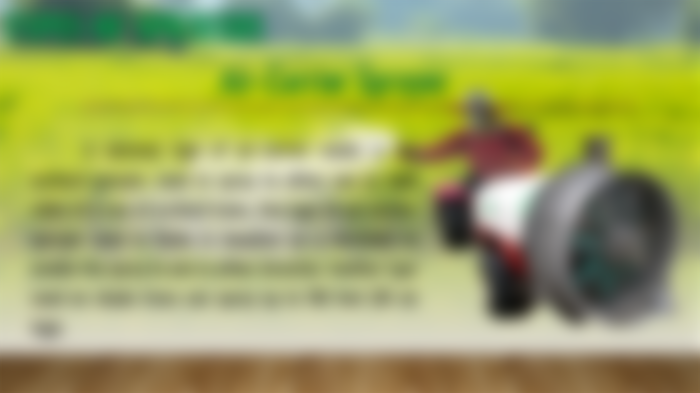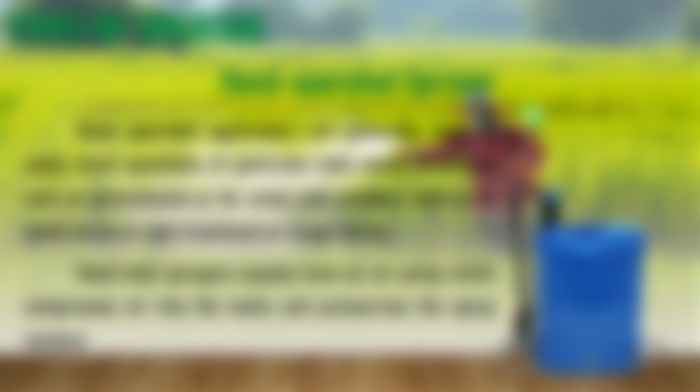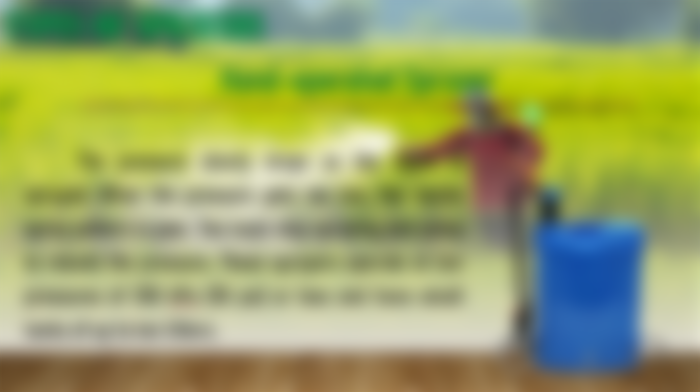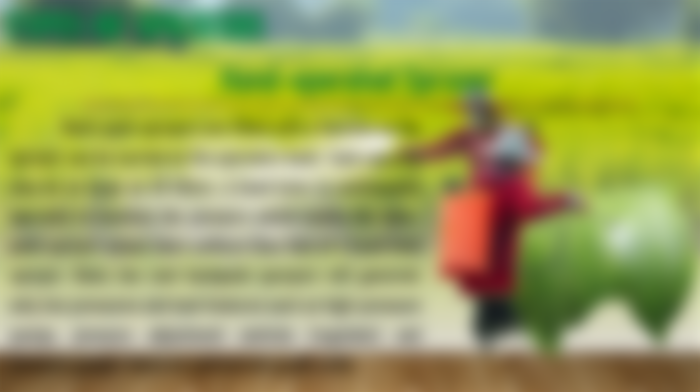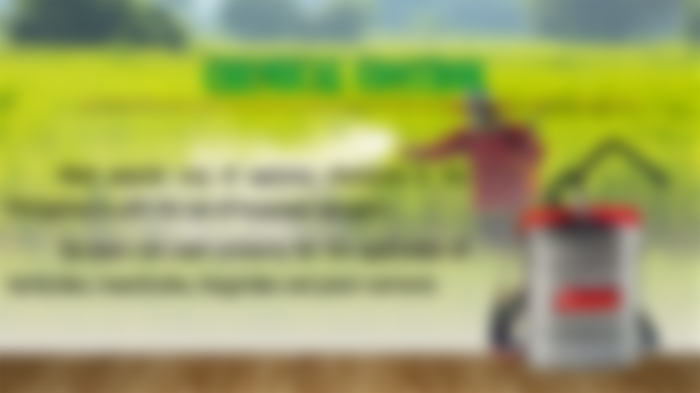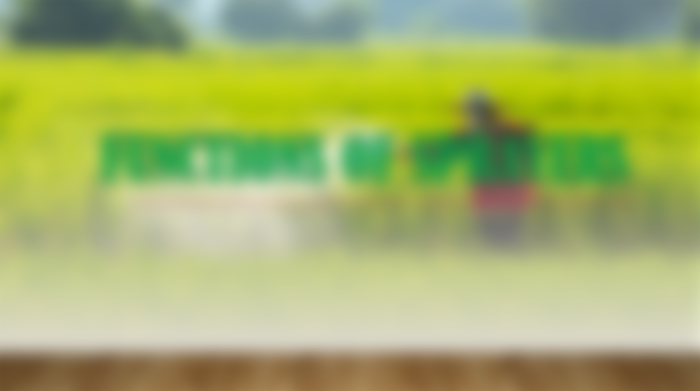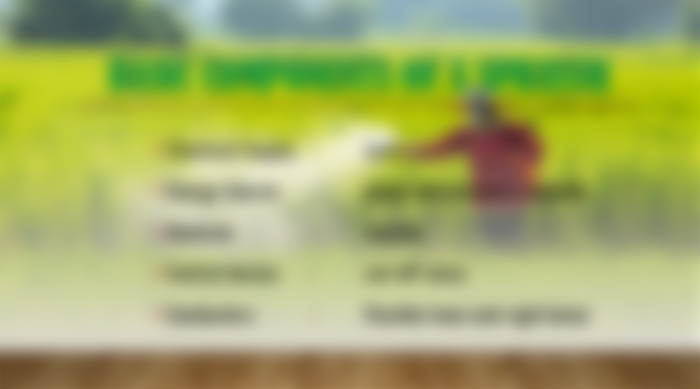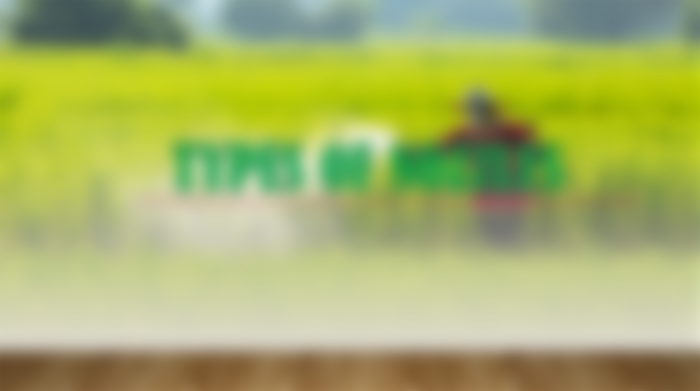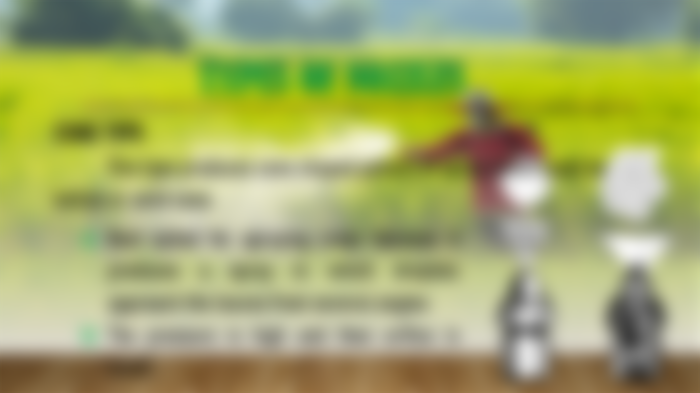Another day, another "reporting" day! My content for tonight is about the Chemical Applicator Sprayer which we have reported this afternoon. With the help of my 5 co-members, we have accomplished this report. Actually, I'm the one who insisted to do the presentation and in return, they will help me with the reporting. I also divided them with their corresponding topics. One of the co-members also helped me in creating the handouts. So, here we go. I hope you can learn something in here.
CHEMICAL APPLICATOR SPRAYERS

Before we proceed to our main topic, let us first discuss the history of sprayers.
HISTORY OF SPRAYERS

Though methods of chemical pest control have been used for centuries, they were not always spread by machine; before the 1800s, most pesticides were applied by hand.
Early sprayers were most likely first developed to apply fungicides to the vineyards of Bordeaux, France.
Between 1850 and 1860, John Bean of California, D.B. Smith of New York, and the Brandt Brothers of Minnesota ,developed the hand-operated insecticide sprayer.
1874 marked the year that knapsack sprayers first entered the U.S. market.

At the beginning of the following decade, the first commercial spraying machine was introduced. By 1887.
In 1894, the first steam-powered sprayer was produced.
Advancements continued, and by beginning of the 20th century, the first gasoline engine powered sprayer was on the market.
1911 saw , the introduction of a pressure regulator and air chamber; these were employed to achieve smooth, uninterrupted spraying.

In 1914, Moses Rittenhouse began producing ‘orchard sprayers’ for the fruit-producing region in Niagara, later founding M.K. Rittenhouse.
Several years after the development of the row-crop tractor in 1925, tractor mounted sprayers were introduced.
The same year, low-volume, low-pressure sprayers were introduced. In 1945.At that time 10,000 power sprayers were produce.
In 1950, 75,000 power sprayers were produced.
WHAT IS A SPRAYER?

Sprayers are commonly used on farms to spray pesticides, herbicides, fungicides, and defoliants as a means of crop quality control. There are many kinds of machine-operated sprayers, the most common of which are low-pressure, high-pressure, air-carrier, and fogger types.

Insects and weeds are largely responsible for the crop destruction. In modern horticulture and agriculture, insecticides/pesticides, a man made or natural preparation are used to kill insects or otherwise control their reproduction. These herbicides, pesticides, and fertilizers are applied to agricultural crops with the help of a special device known as a “Sprayer.”

Based on the concept of high or low pressure, sprayer provides optimum performance with minimum efforts. There are several types of sprayers available in the market such as manual or self-propelled sprayers, tractor mounted sprayers and aerial sprayers.
APPLICATION AREAS OF SPRAYERS


Sprayers are not only used in agricultural applications but also in domestic purposes. Below is a few detail of their application areas:
Agriculture
Pest control
Water spraying
Small nurseries
Gardens
Spraying wettable insecticides and fungicides
Orchards
Vegetable gardens
TYPES OF SPRAYERS

Sprayers are available in variety of sizes and specifications, depending on the requirement of the plant / crop.

Following are the main types of sprayers used for insecticide or pesticide sprays:
1) Low pressure sprayer
Tractor mounted
High clearance sprayer
Trailer-mounted Sprayers
Truck mounted sprayers
2) High pressure sprayer
3) Air carrier sprayer
4) Fogger ( Mist blowers )
5) Hand operated sprayer

Low pressure sprayer
These sprayers are most widely used due in part to their relatively low cost. Low-pressure sprayer types include tractor mounted, high-clearance, trailer mounted, and truck mounted versions; they are typically operated hydraulically.
Low-pressure sprayers include an air chamber to level out the pump’s pulsations to provide a constant nozzle pressure, as well as pressure gages and regulators. Though booms are common on many sprayers, boom less power jet sprayers, with one to five nozzles on a single bracket, are also available.

Tractor-mounted
In a tractor mounted configuration, a tank ranging with a capacity ranging from 150 to 500 gallons (568 to 1,893 L) is mounted on a tractor. While the pump is attached to the power take-off shaft, it may be driven by a hydraulic motor. The sprayer’s booms can be located in the front, rear, or on the belly the tractor.

High-clearance Sprayers
These sprayers, derived from tractor mounted sprayers, are comprised of a tall frame that can clear corn, cotton, and tobacco, in addition to other tall crops. Additionally, high-clearance sprayers’ boom height can be adjusted depending on the height of the crop.

Trailer-mounted Sprayers
Trailer mounted sprayers, mounted on a trailer and towed by an agricultural tractor, comprise a tank with a potential 1,000-gallon (3,785-L) capacity. The pump, driven by the power take-off shaft or hydraulic motor, is mounted on the sprayer. These sprayers may have a boom measuring from 12 to 50 feet (3.7 to 15 m) in length. In addition, high-clearance trailer mounted sprayers are available.

Truck-mounted Sprayers
This design consists of a skid-mounted sprayer, powered by an auxiliary engine, placed in a pickup or flatbed truck. Flotation tires are included on larger units to aid the sprayer’s operation in wet conditions. These large models, including tanks that hold up to 2,500 gallons (9,463 L) and booms up to 60 feet (18.3 m) long, are most useful on expansive areas, or special applications.

High pressure sprayer
High-pressure application of chemicals is employed when spray needs to be driven through thick brush or tall trees. These sprayers, heavier and more expensive than low-pressure models, are able to operate under working pressures as high as 1,000 pounds per square inch (6,895 kPa). Aside from these differences, they are also hydraulically operated and consist of the same basic parts as low-pressure versions; they can be applied to the same tasks when outfitted with a boom.

Air-carrier Sprayers
These machines are often referred to as air-blast sprayers or mist blowers. Pesticides contained in air-carrier sprayers are transported in an air stream ranging in speed from 80 to 150 miles (129 to 241 km) per hour. Concentrated pesticides are used in these sprayers, as the air in which they are carried disperses and dilutes them considerably. The use of concentrated chemicals is therefore more efficient, as it takes little time to fill the tank when 80 percent less dilution water is required.

A common type of air-carrier model is the orchard sprayer, used to spray to either one or both sides of a row of orchard trees. One type of air-carrier sprayer used in fields is mounted on a turntable to enable the spray to aim in either direction. Another type used on shade trees can spray up to 100 feet (30 m) high.

Hand operated sprayers
Hand operated applicators are generally used to apply small quantities of pesticides both inside structures such as greenhouses or for small jobs outdoors such as on small farms or spot treatment on larger farms.
Hand-held sprayers usually have an air pump which compresses air into the tanks and pressurizes the spray mixture.

The pressure slowly drops as the liquid is sprayed. When the pressure gets too low, the nozzle spray pattern is poor. You must stop spraying and pump to rebuild the pressure. These sprayers operate at low pressures of 350 kPa (50 psi) or less and have small tanks of up to ten litters.

Back-pack sprayers are fitted with a harness so the sprayer can be carried on the operators back. Tank capacity may be as large as 20 litters. A hand lever is continuously operated to maintain the pressure which makes the back-pack sprayer output more uniform than that of a hand-held sprayer. Basic low cost backpack sprayers will generate only low pressures and lack features such as high-pressure pumps, pressure adjustment controls (regulator) and pressure gauges found on commercial grade units.
CHEMICAL CONTROL


Most popular way of applying chemicals in the Philippines is with the use of knapsack sprayers. Sprayers are used primarily for the application of herbicides, insecticides, fungicides, and plant nutrients.
FUNCTIONS OF SPRAYERS



Break the liquid into droplets of effective size.
Distribute the spray solution uniformly.
Regulate the spraying rate.

DESIRABLE QUALITIES OF SPRAYERS


It should produce a steady stream of spray material in desired droplet size.
It should deliver the liquid at sufficient pressure.
It should be light in weight yet sufficiently strong, easily workable and repairable.

BASIC COMPONENTS OF A SPRAYER


Tank - container that holds the chemical solution.
Pump - used to move fluids.
Pressure chamber - helps for continuous spraying.
Nozzles - the component which breaks the fluid into fine droplets.
Cut-off valve - provided in the delivery line to control the flow from the pump.
Flexible hose - the tube where chemical solution flor through.
Rigid lance - allows a greater reach when spraying.

NOZZLES


Performance is dependent on hydraulic energy as follows:
The HIGHER the pressure, the SMALLER the droplets.
The HIGHER the pressure, the HIGHER the flowrate.
The HIGHER the pressure, the WIDER the spray angle.


Cone type
This type produces cone shaped pattern of spray which could be hollow or solid cone.
a. Best suited for spraying crops because it produces a spray in which droplets approach the leaves from several angles.
b. The pressure is high and then orifice is small.

Flat pan nozzles
a. These are used largely for broadcast spraying, where foliar penetration and coverage are not essential.
b. The best operating pressure for flat fan nozzles is 15-30 psi, which produce coarser droplets that are not susceptible to drift.

Double swivel nozzles
a. This has two swivel nozzles instead of one, capable of independent movement.

Spray Boom
a. This design consists of several nozzles mounted on a rod, ideally suited to row crops, and can be operated with foot/rocker/knapsack/power operated sprayers.
Spray Gun
a. Spray guns consist of cut-of-valve extension rod and nozzle and can be trigger or hand-operated.
b. The spray pattern is adjustable from solid jet to hollow cone, and are most widely used for tall trees.

This ends our presentation. Actually, we have presented some sample problems but I will not discuss it anymore here. Hehehe I hope you had fun reading this article.
See you in my next article! Have a great night!
